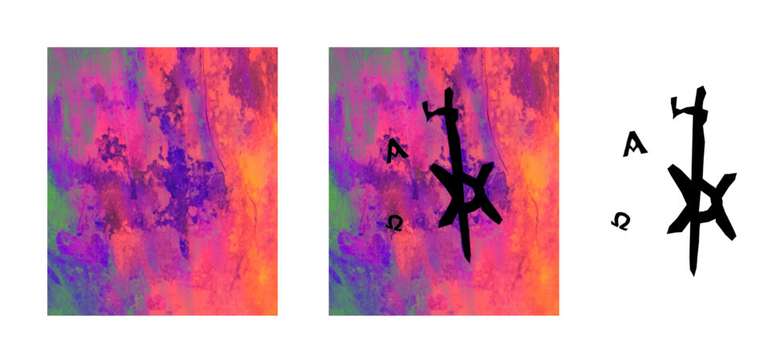The find raises numerous questions about the practice of tattooing and signs of faith in medieval Nubia
Researchers from the Polish Center for Mediterranean Archeology of the University of Warsaw (PCMA UW) have discovered, in the medieval monastic site of Ghazali, located in the Wadi Abu Dom region of the Bayuda desert in northern Sudan, a tattoo in honour of Jesus on a corpse approximately 1,300 years old.
The team, led by Professor Artur Obłuski, found the religious symbol in a cemetery near the monastery, shedding light on the practice of tattooing in Medieval Nubia.
Ghazali Monastery, dating back to the 7th-13th centuries, is one of the best preserved abandoned sites in Sudan, located about 20 km from the city of Karima.
During a long period of investigation between 2012 and 2018, the Polish-Sudanese PCMA team explored not only the medieval Christian monastery, but also four cemeteries that housed hundreds of graves.
The remains of these individuals are currently being analyzed by UW PCMA bioarchaeologist Robert J. Stark and his team, with the goal of uncovering aspects of the lives of the people who were buried there.
Jesus tattoo
The team’s most intriguing discovery occurred recently, when Kari A. Guilbault of Purdue University accidentally found a tattoo on the right foot of one of the individuals buried in Ghazali Cemetery 1.
After analysis, the tattoo was confirmed as a Christogram and the Greek letters “alpha” and “omega”.
The Christogram is a religious symbol that combines the Greek letters “chi” and “rho” to form an abbreviation of the name of Christ, while the letters “alpha” and “omega“which represents the beginning and end of Greek alphabet, symbolize the Christian belief that God It’s the beginning and the end of everything.
“It was a real surprise to suddenly see what appeared to be a tattoo while working with the Ghazali collection. At first I wasn’t sure, but when the images were processed and the tattoo was clearly visible, all initial uncertainties were been eliminated,” Kari A. Guilbault noted in a statement.
This discovery sheds light on the practice of tattooing in medieval Nubia and, perhaps, on the era’s expression of faith. To date, only one other religious tattoo has been documented in the region.
Ongoing bioarchaeological research should continue to investigate the origins of the local population and deepen our understanding of the lives of the people who were buried at Ghazali.
Source: Terra
Rose James is a Gossipify movie and series reviewer known for her in-depth analysis and unique perspective on the latest releases. With a background in film studies, she provides engaging and informative reviews, and keeps readers up to date with industry trends and emerging talents.


![Such a wonderful sun in advance: on August 20, 2025, Summary of Wednesday Episode [SPOILERS] Such a wonderful sun in advance: on August 20, 2025, Summary of Wednesday Episode [SPOILERS]](https://fr.web.img6.acsta.net/img/b9/7f/b97f1d9f8efd85c2c1ffcb330035b260.jpg)



